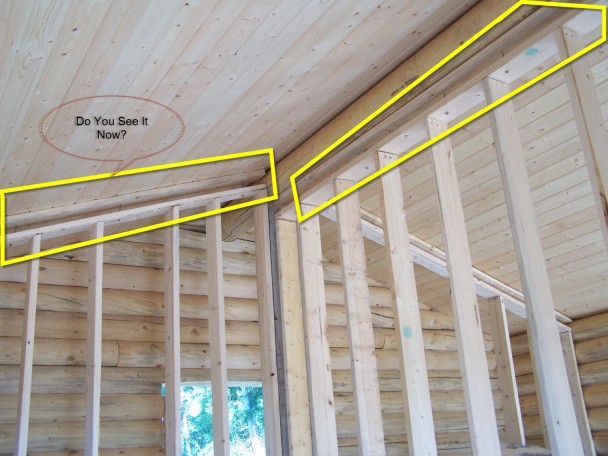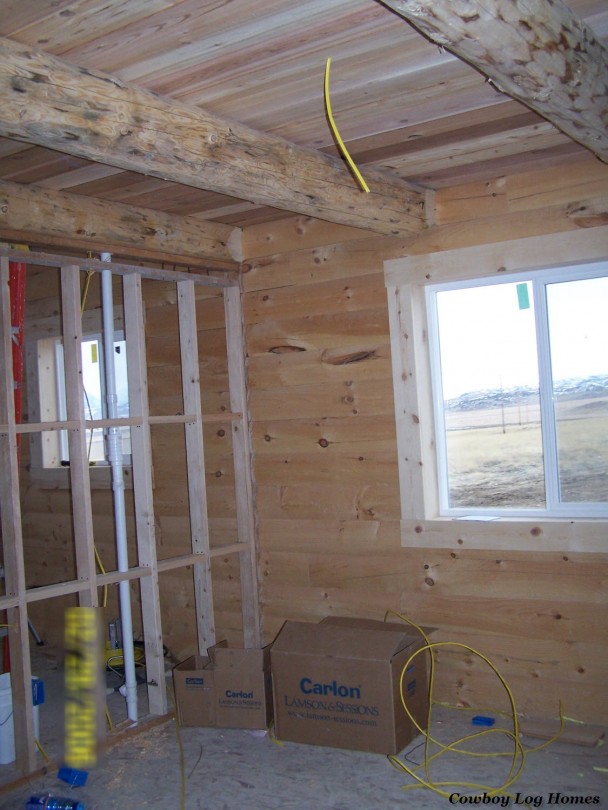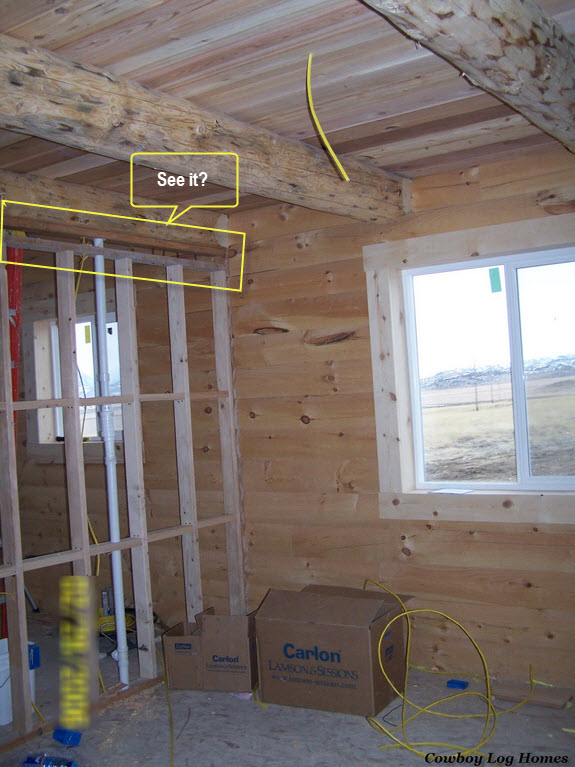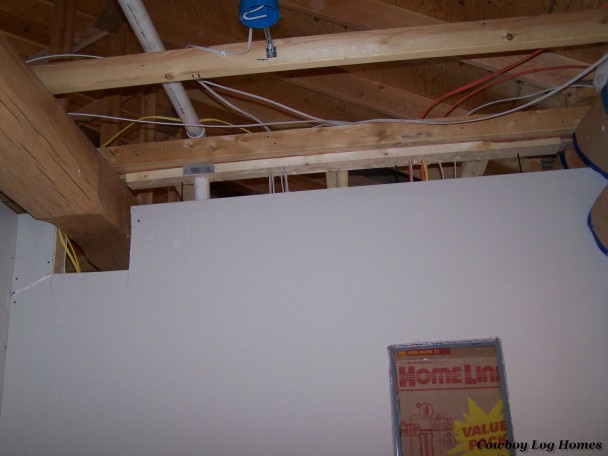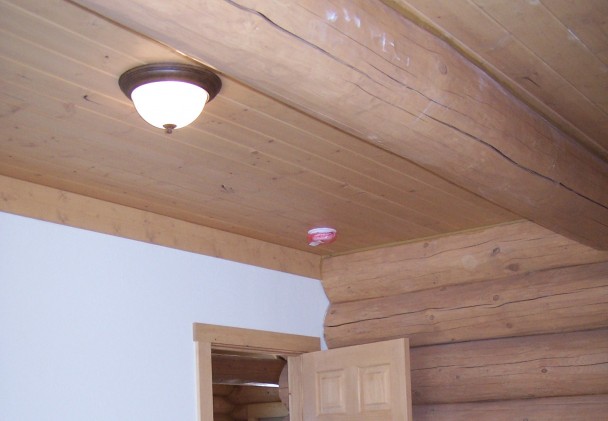Log Homes ~ Shrinkage
Sue | February 5th, 2015 - 2:07 pmLook at the photo below. Do you know what it is?
You may have guessed it is a stacked log wall with a log ridge beam and some interior framing.
But look again. What else do you see? Try the next log home photo were I have some things noted…
While we all can spend hours browsing through snap shots of photos sometimes you don’t see everything that is there. The areas of the framing that are marked in yellow are called shrinkage channels. Every log home should have the interior framing completed with shrinkage channels and slip joints. This framing allows for the logs to settle without causing any binding with the framed walls.
Do you see the shrinkage channel in the next photo?
How about now?
The shrinkage channel is visible to the left hand side of the top. This is a milled log wall (smooth surface) with handcrafted log floor joists supporting the loft above. The framed wall to the left of the photo is the bedroom wall with the other side serving as the kitchen wall.
Now look at this one…
This is very important… This photo shows the drywall being hung on the interior framing lumber, but the drywall is not hung such as to cover the horizontal shrinkage channel at the top. The black metal pins holding the shrinkage channel in place are a specialized threaded screw with a smooth shank. This allows the shrinkage channel to compress as needed. A log wall will win out over a framed wall every time. A frame wall needs this shrinkage channel so the rigid interior wall stays stationary while the log wall is allowed to move. The shrinkage channel is covered by hanging wood trim and only fastening it on the top.
Notice the wood trim along the top of the dry wall wall. This trim is intentionally installed to cover the shrinkage channel.
Shrinkage Channels Over Doors and Windows
Shrinkage channels are also left above any doors and windows in log walls. Here we see the shrinkage channel intentionally left above the window buck.
The window is installed within the buck. Then the channel is covered on the exterior with a section of house wrap, insulation is slipped into the channel, then the trim is installed.
 Above we also see the shrinkage channel over the exterior door frame. Without shrinkage channels the doors and windows receive pressure from the logs, which in turn can cause doors to drag and windows to even crack.
Above we also see the shrinkage channel over the exterior door frame. Without shrinkage channels the doors and windows receive pressure from the logs, which in turn can cause doors to drag and windows to even crack.
How Much Shrinkage??
The amount of shrinkage depends on the style of log home you choose and the greenness of the logs themselves. A lower moisture content log will shrink less than an wet log. With an 8″ milled log home we usually allow for about 1 1/2 of settling, but we’ve never had a milled log need that much room.
For a handcrafted log home we allow for up to 6 inches of settling.
By utilizing shrinkage channels and wood trim to cover the shrinkage channels, it allows for a ‘floating effect’ with out it being visible. A shrinkage channel in a milled log home is not as wide as those we allow for in a handcrafted log home. A shrinkage channel, such as these, is also used above door and window openings.
Another is the slip joint. But these I will cover in the another log home article.
** Click here for SLIP JOINT LOG HOME ARTICLE
Shrinkage is a natural property of logs and not something to be feared, if the log home is properly built. The vast majority of the shrinkage and compression will occur over the first 12 months after the logs are stacked. Another interesting fact is logs will expand on hot humid days and contract on cold winter days, even when the home is 30 years old. Logs are natural and they never entirely ‘die’.



